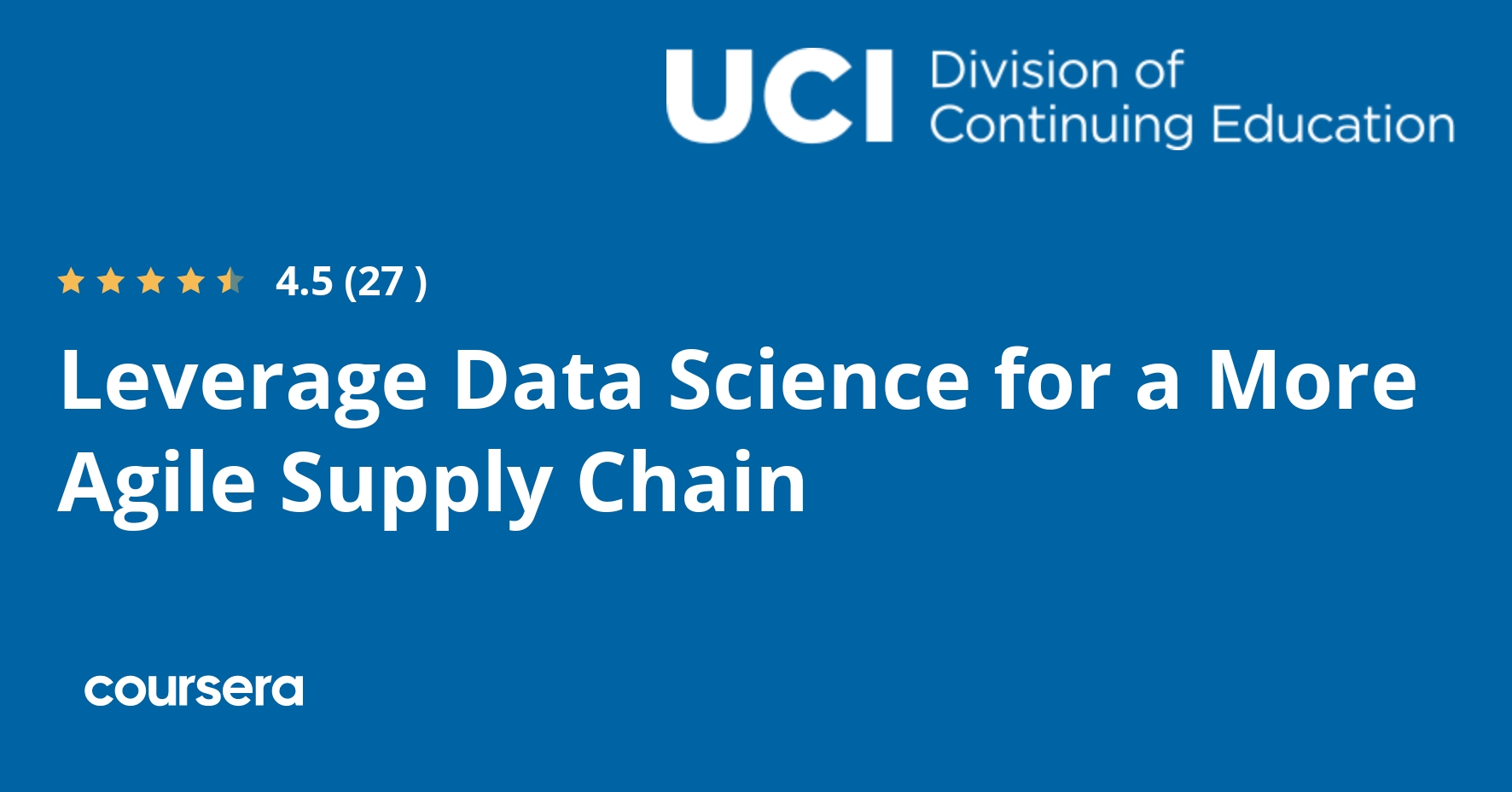Description
Over the past two decades, the supply chain has become more complex. While advancing technology has allowed companies to capture this complexity within stores of ever accumulating data, companies have not kept up with how to analyze and derive insights from that data. This specialization uses hands-on activities to show how data science techniques can turn raw data into decision-makers for a more agile supply chain. Foundational techniques such as demand forecasting, inventory management with demand variability, and using the newsvendor model are covered, in addition to more advanced techniques such as how to optimize for capacity and resources as well as mitigate risks with the Monte Carlo simulation. By the end of this specialization, you will be able to:
Describe how demand planning, supply planning, and constrained forecast are associated with one another. Use Excel to analyze historical data to quantify future needs. Analyze historical data to determine inventory levels in steady and uncertain demand situations using Excel. Manage inventory in an uncertain environment. Quantify the inventory needs for single-period items using the newsvendor model. Identify the components of capacity optimization, resource optimization, and Monte Carlo simulation. Set up and solve optimization problems in Excel. Build a demand and inventory snapshot and run a Monte Carlo simulation to solve for a more agile supply chain.
Throughout the specialization, learners work with real-world supply chain data to analyze various supply chain scenarios. To close, learners apply concepts from all three courses to apply learned data science skills to improve the margins of a supply chain.






